SEO
AI Content Is Short-Term Arbitrage, Not Long-Term Strategy
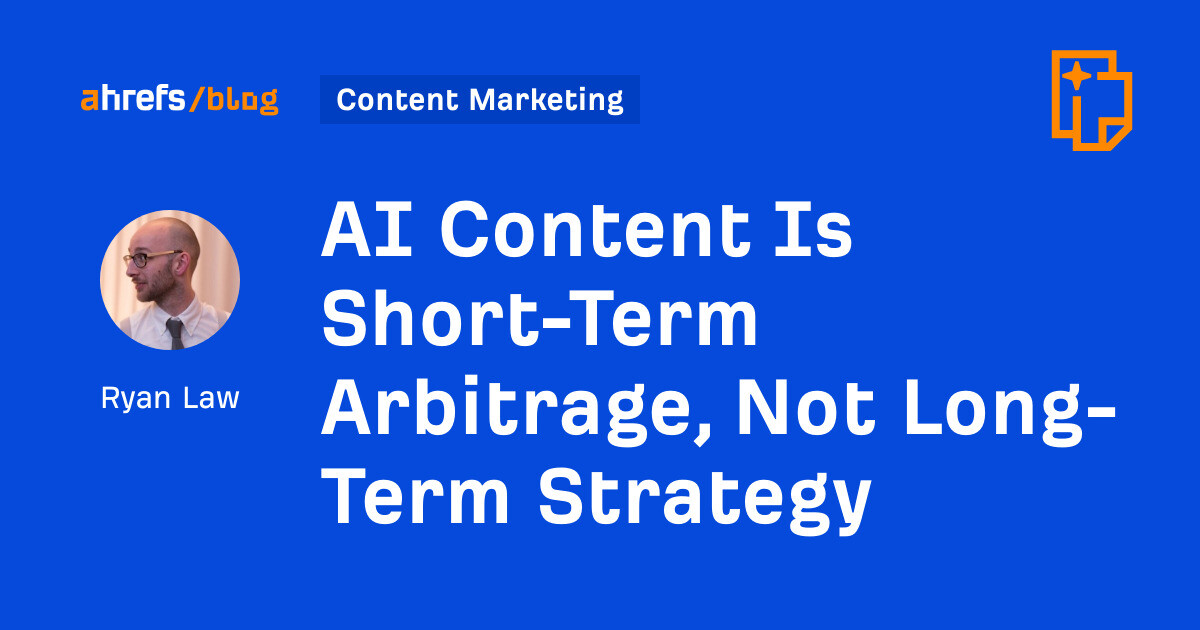
For a few hundred bucks, you can hit the big red “publish” button and use generative AI to write every article you’ve ever wanted to write. It’s sorely tempting.
But beyond the short-term dopamine hit of publishing a thousand articles at once, for most businesses, the negatives of AI content will very quickly outweigh the positives.
First up—there is precedent for getting a Google manual action for publishing AI content at scale.
Back in November, the founder of an AI content tool tweeted about their “SEO heist”. They exported a competitor’s sitemap, turned every URL into an article title, and used AI to publish 1,800 articles:
In some ways, this is part of the cat-and-mouse game of SEO. A website identifies a traffic opportunity, their competitors follow suit. But in the month following the tweet, the site’s traffic tanked to virtually zero:
Most of the site’s rankings plummeted into non-existence, courtesy of a manual action:
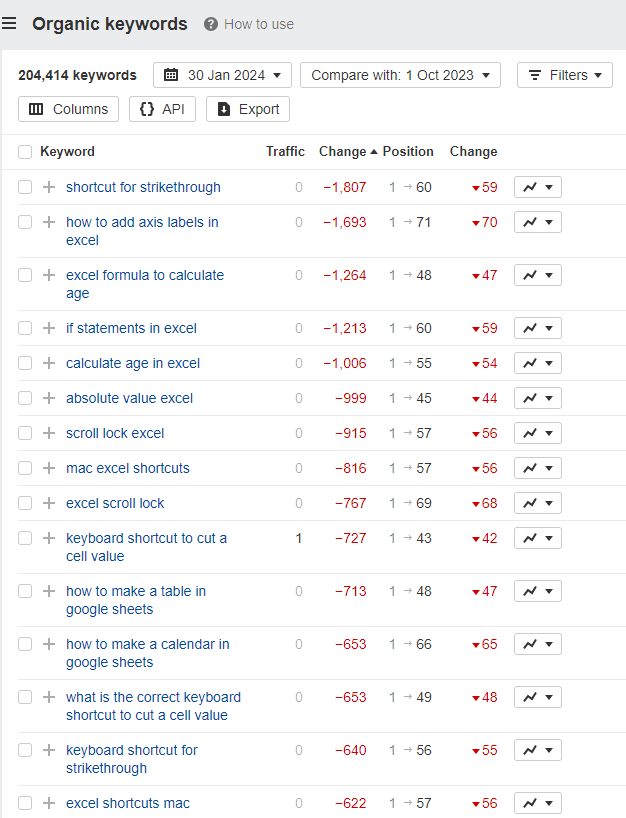

Crucially, I don’t think that publishing AI content means an automatic penalty. AI content detectors don’t work, and even if they did, Google is apparently agnostic to AI use—but it is not agnostic to bad content or bad actors.
And AI makes it very easy to make bad content:
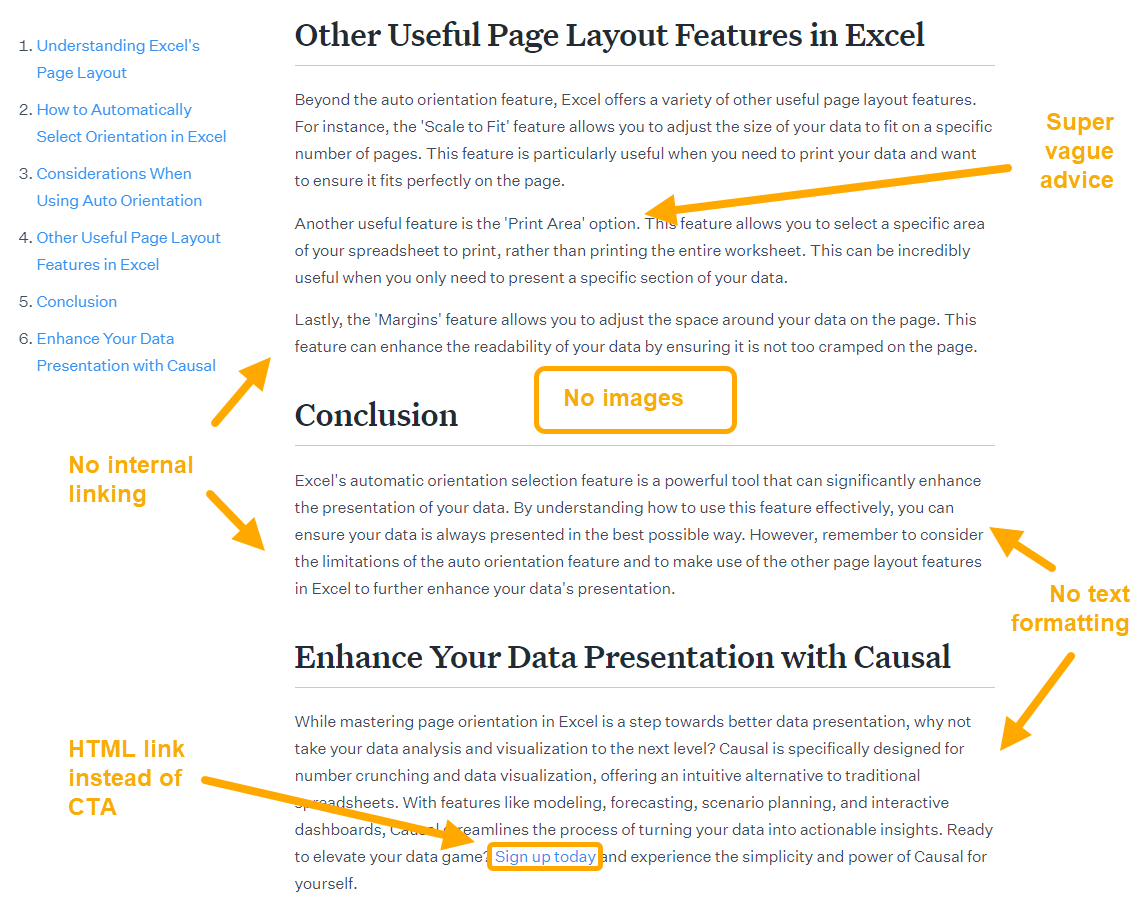

I think the penalty happened because:
- They published 1,800 pages of low-quality content, with no images, virtually no formatting, and many errors, and
- They tweeted about it and caught Google’s attention.
Even if you don’t tweet about your AI content efforts, the precedent matters: publishing tons of AI content with no oversight is penalty-worthy. For any business building its traffic and audience for the long term, even a small risk of a catastrophic outcome (like a penalty) should give pause for thought.
AI content is, by its nature, mediocre. Mediocrity should not be the end goal of your content strategy.
LLMs, like ChatGPT, work through a kind of averaging. Words are chosen based on how often they appear in a similar context in the model’s dataset, generating “new” content based largely on what everyone else has already said. As Britney Muller explains in her guide to LLMs:
“Instead of randomly drawing a word out of a hat, an LLM will focus only on the most probable next words… It’s like a musician reading sheet music, moving through the notes one at a time. The goal is to figure out what the next word is likely to be as the model processes each word in the sentence.”
To borrow a phrase from Britney, AI-generated content represents the literal “average of everything online.” That’s useful for topics where there’s a single, objective answer (“when was Abraham Lincoln born?”), but less useful for any topic that benefits from nuance, or differing perspectives, or firsthand experience.
You can play with different prompting strategies to alter and shape the structure and style of AI content. But even assuming you go to that length (many AI content tools don’t offer that freedom), you can’t escape a few realities of AI content:
- It contains no information gain: it can’t conduct research, or share personal experience, or vocalize a defensible opinion.
- It gets things wrong: it suffers from hallucinations and regurgitates common mistakes and errors.
- It doesn’t understand you or your business: try getting AI content to tactfully showcase your product in your content (like we do at Ahrefs).
…and this is before we worry about leaking sensitive information, accidental copyright infringement, or the million ways in which unsupervised content could perpetuate bias and misinformation.
It’s easy to look at traffic graphs for AI content and think that “mediocre” content is good enough. But returning to the example of the “SEO heist”, most of their (now lost) rankings were limited to very low competition keywords (as measured by Keyword Difficulty in Ahrefs):
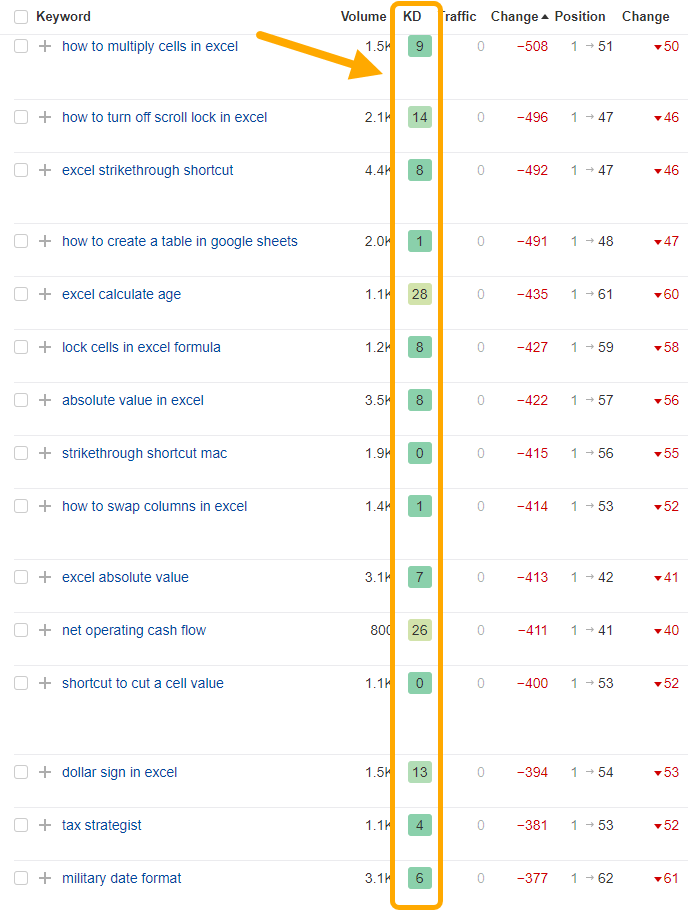

Mediocre content might perform well in uncontested SERPs, but it isn’t enough to compete in SERPs where companies have invested actual effort and resources into their content.
And crucially, it leaves a bad impression on the living, breathing people who read it:
Let’s assume your AI content works. You publish hundreds of articles and generate thousands and thousands of visits. Is that really the boon it sounds like?
For most companies that pursue SEO, blog posts quickly become the primary source of website visitors. For an extreme example, look at the pages that generate the most organic traffic for Zapier—they are almost entirely blog posts:
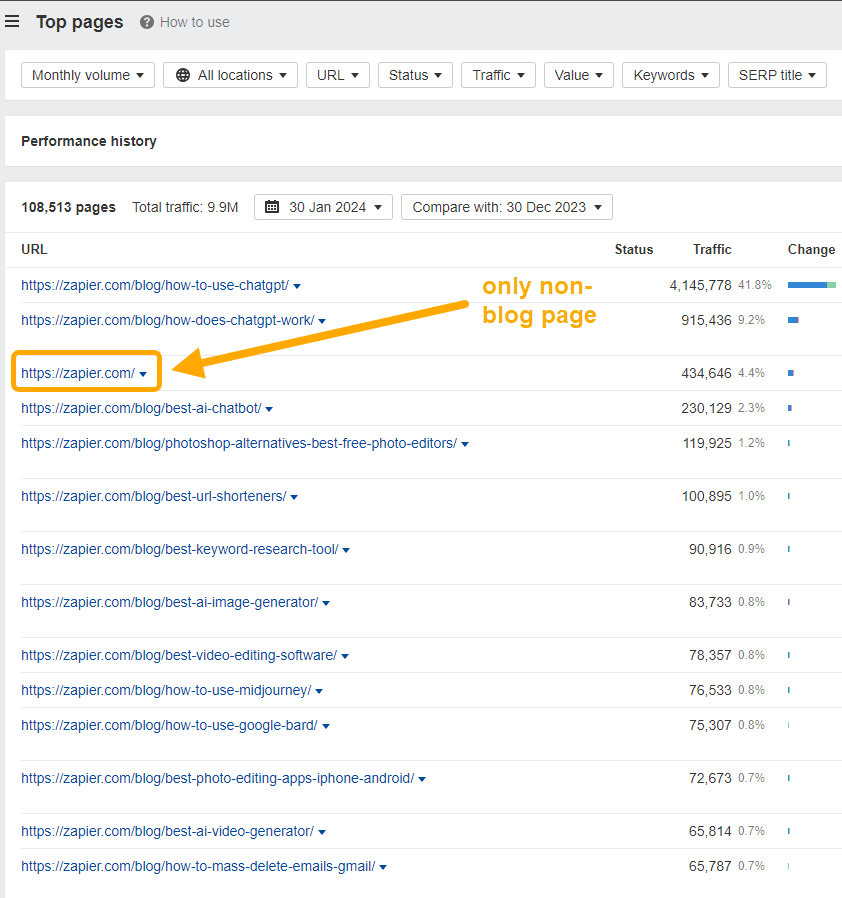

This is estimated organic traffic (and doesn’t include traffic from other sources), but the point is clear: most of the interactions people have with your company are mediated by content.
Many visitors won’t ever see your carefully crafted homepage or product landing pages. Their entire perception of your company—its ethos, beliefs, quality standards, helpfulness—will be shaped by the blog posts they read.
Are you happy with AI content making that first impression?
Think of the time and effort that went into your core website pages: endless variations of copy and messaging, illustrations and visual design, tone of voice, rounds of review and finessing… and compare it to the effort that goes into AI content, published en masse, unread, unedited.
It’s easy to think of content as “just an acquisition channel,” but in reality, your 800 AI-generated SEO posts will have a bigger impact on the public perception of your brand than your latest product landing page.
The point of content marketing is to help sales. Everything you create should, in some way, help people to buy your product or service.
The types of keywords AI content is good at ranking for are typically low commercial value and unlikely to lead to a sale. By way of example, here’s the estimated traffic value for the “SEO heist” site’s organic traffic, at its peak:


Sidenote.
Traffic value measures the equivalent monthly cost if a site’s traffic from all keyword rankings was paid for through PPC advertising—so it acts as a good proxy for the commercial value of a keyword (a high traffic value means companies think the keyword is lucrative enough to bid on).
And here’s the Ahrefs blog, with a similar amount of estimated organic traffic… and a traffic value six times higher:


Most of the benefit of AI content boils down to lots of traffic, fast—the quality and purchase intent of that traffic is a distant second.
Great, if your entire business model is monetizing mountains of traffic through affiliate links or ad networks. But for every other type of business, traffic is only half the battle. In order to help sales and grow the business, content also needs to:
- Leave a lasting impression and help readers remember your company.
- Encourage people to visit again and again (and not bounce forever on the first post).
- Build trust in and affinity for the real people behind the brand.
Here’s another AI content example. How well does this guide to “Removing Dashes from ISBN Numbers in Excel” tick those boxes?


AI content is good for generating traffic but bad at building trust. There’s no recognisable voice, no firsthand experience or narrative, and no real person behind the writing (unless you take the Sports Illustrated route and also create AI-generated authors for your content).
At best, it’s like reading a Wikipedia page: even if you help the reader solve a problem, they won’t remember you for it. While traffic is great (and more traffic is usually better than less), it can’t come at the expense of trust.
Here’s the most important problem with AI content: there is no barrier to entry. Anyone can do it, virtually for free. If it’s easy for you to publish 1,000 articles, it’s easy for your competitors to do the same, and their competitors, and their competitors…
So even assuming you get good results from AI content—how long will those results last?
At best, AI content is a form of short-term arbitrage, a small window of opportunity to build tons of traffic before a competitor, or a dozen competitors, decide to do the same. With most AI-generated content being pretty similar, there will be no “loyalty” from readers—they will read whatever ranks highest, and it will only be a matter of time before your content is challenged by a bigger fish, a company with a bigger budget and better SEO team.
Over time, you will be outcompeted by companies able to put more effort into their articles. So just skip right to the end of the cycle and create content that has a defensible moat:
- Interview real people and share new information that other publications haven’t covered,
- Collect original data in the form of industry surveys, polls, and data analysis,
- Tell personal stories and share the unique, firsthand experiences of the topic that nobody else can.
Or put another way:
Final thoughts
There are plenty of good use cases for LLMs in SEO and content marketing. You can brainstorm keywords and titles, generate metadata and alt text at scale, write regex queries and code snippets, and generally use LLMs as useful inputs into your creative process.
But for most businesses, hitting the big red “publish” button and publishing thousands of AI-generated articles is a pretty bad use of LLMs, and a pretty bad idea overall. And even if AI content gets good enough to render most of these objections irrelevant, we will still have the problem of zero barrier to entry; if it’s easy for you to do, it’s easy for your competitors.
AI content is short-term arbitrage, not a long-term strategy.

















